
views
Providing Medical Treatment
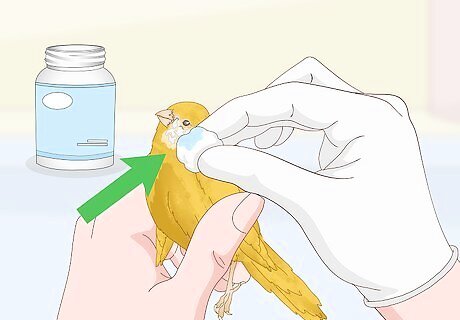
Treat lesions and crusts. Lesions and crusts that result from avian pox will need to be treated. Your vet will clean these wounds, and if any infection is present, they may apply an antibiotic solution or ointment. Treatment will help your bird’s lesions to heal effectively, and help them to feel more comfortable. If your bird is comfortable with being handled, you can clean the crusts yourself. Use a mild disinfectant provided by your vet. If crusts or scabs fall off of the bird, dispose of them to prevent the pox from spreading to other canaries or birds.
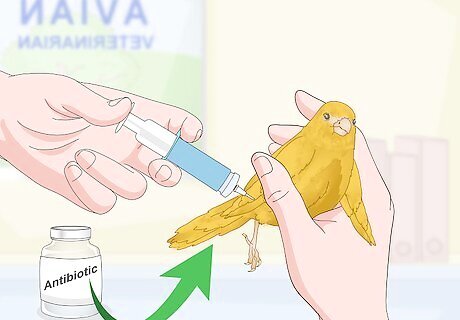
Treat any secondary infections. It is possible for your bird to contract avian pox, in part, due to a weakened immune system. Additionally, it is possible for your bird’s avian pox lesions to become infected. If your vet has detected any type of secondary infection, it will need to be treated. Often, treatment will involve the use of antibiotics. Your vet can administer antibiotics by way of injection.
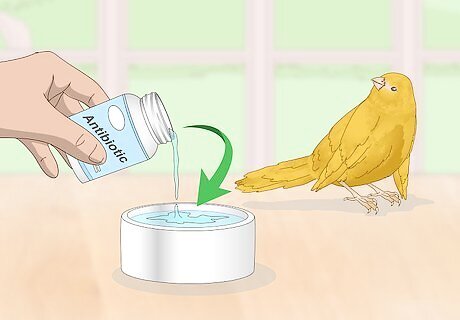
Administer antibiotics at home. You may need to continue providing antibiotics to your bird after you return home. There are typically two options for antibiotics. Liquid antibiotics are added to the bird's water, but this might discourage the bird from drinking. Topical antibiotic ointments can be applied to lesions on the skin. Talk to your vet about the best option for your canary. Always follow all instructions provided by your vet, and continue providing antibiotics for as long as your vet has advised. Wear disposable gloves when handling your sick bird, particularly when touching wounds or lesions.
Providing Supportive Care
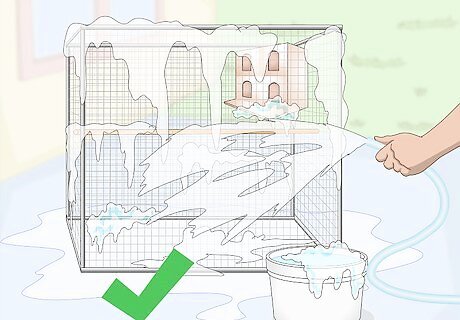
Keep the cage very clean. Unfortunately, no cure for the avian pox virus currently exists. Instead, you and your vet can offer your bird supportive care while the virus runs its course. One way to help your bird heal is to keep their cage very clean. Remove cage liners and wipe the bottom of the cage daily. Wash food and water dishes daily. Perform a deeper cleaning of the cage every 1-2 weeks.
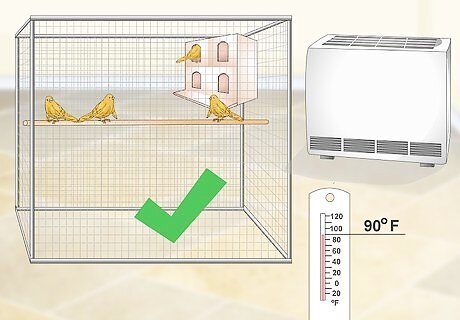
Keep the room warm. Canaries can get cold easily when they are sick. Try to keep the room temperature at around 90 °F (32 °C). If the bird is sitting in their cage with their feathers fluffed up, they are cold. You should increase the temperature.
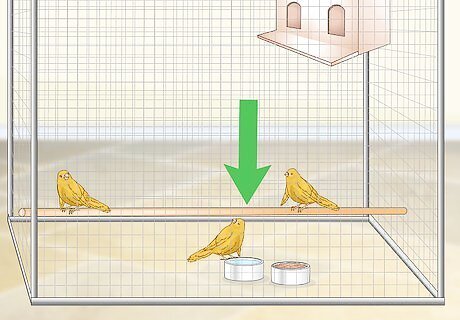
Make physical accommodations. While your bird is recovering from avian pox, they may be quite weak. In order to help them recover safely, ensure that everything they need is close by and low to the ground. Lower any perches. Make sure food and water dishes are accessible.
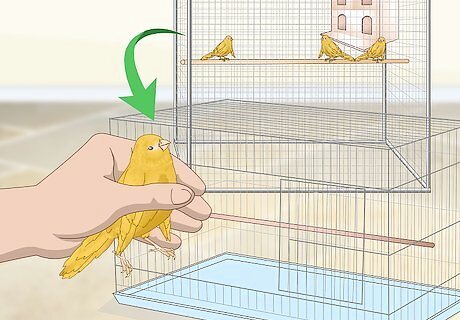
Isolate the bird. If you have other birds in your home, you will need to quarantine you canary while they are experiencing avian pox. Ideally, you should keep your sick bird and healthy birds in completely separate residences (such as with a friend). If this is not possible, place your sick bird in a closed room and cover all vents to prevent transmission of the disease. Continue to quarantine your sick canary until your vet says it is OK to reintroduce them.
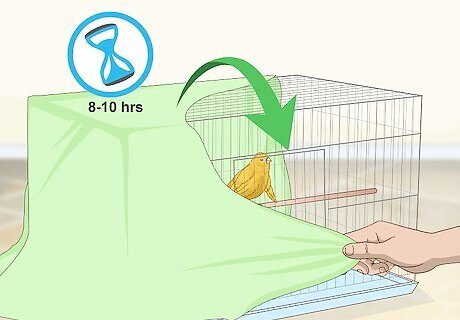
Ensure adequate rest. Under normal circumstance, your canary needs 8-10 hours of rest. In order for your bird to recover from avian pox, you should offer closer to 12. Cover your bird's cage and try to keep your home quiet during these times.

Provide plenty of water. Keep the water as close as possible to your canary so that they don't have to move far to reach it. If the canary won't drink, add a little bit of honey to the water. Change the honey water twice a day.
Diagnosing Avian Pox in Canaries
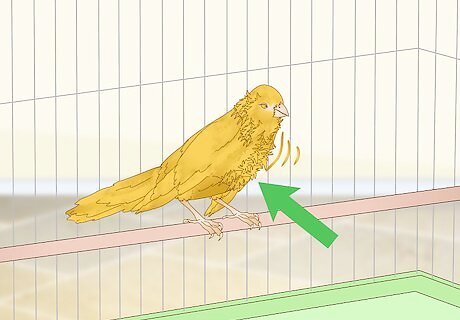
Watch for symptoms. Avian pox manifests in two distinct forms: the dry or skin form, and the wet or throat form (also called “diphtheric”). Of these, the wet form is far more serious (though rare) and often results in the death of the bird. The dry form, on the other hand, is far more common and treatable. General symptoms include: lethargy, weight loss, refusal to eat, ruffled feathers, fast breathing, and/or difficulty breathing. In the wet form, birds will form a thick mucus or plaque in and around the mouth, throat, and sinuses. In the dry form, your bird’s non-feathered areas may turn white or yellow and become encrusted. Ultimately, you will notice wart-like lesions around the face, eyes, beak, legs, and feet.
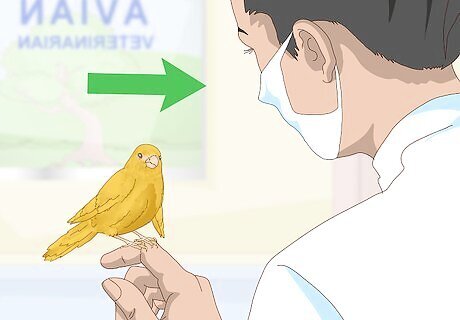
Visit your vet immediately. Although avian pox (especially in its dry form) is visibly recognizable, it can only be diagnosed and treated by a vet. If you notice any symptoms in your bird, make an appointment to see your vet immediately. If possible, seek out a vet that specializes in birds. It is a good idea to find a vet before your bird becomes sick. Always discuss the cost of testing and treatment with your vet before you proceed.
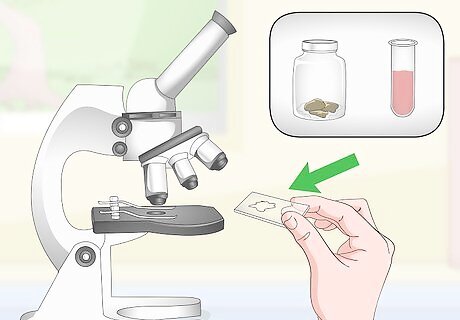
Run a series of tests. Your vet will probably recognize avian pox in your bird based on visible lesions and physical symptoms. However, they are likely to run a series of diagnostic tests, both to confirm the presence of the avian pox virus, and to determine whether or not there are underlying conditions present. You vet is likely to perform: A physical examination Microscopic examination of tissues Blood or serum tests Fecal tests
Preventing Transmission of the Disease

Keep your canary indoors. Avian pox is most commonly transmitted by mosquitoes. You can significantly reduce the chances of your canary becoming infected by keeping them indoors, particularly during the summer months. Mosquitoes can carry the disease for up to one month after biting an infected bird. If you must keep your bird outdoors, take steps to control the mosquito population around your home.
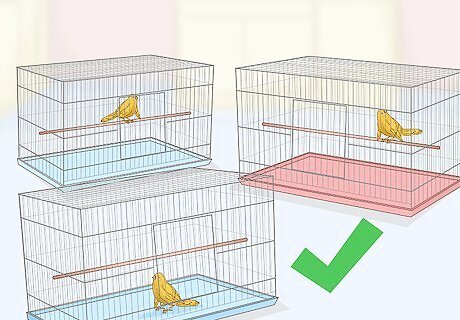
Keep canaries in separate cages. Avian pox may also be spread directly from bird to bird (although this type of transmission is not as common). As such, it is important to keep infected birds separate from healthy ones. Even when they are healthy, canaries prefer to be solitary birds, and will be most comfortable housed in individual cages. Canaries enjoy flying from side to side, so they need a wide cage (rather than tall). Each cage should be at least 16 inches (40.6 cm) tall by 30 inches (76.2 cm) wide.
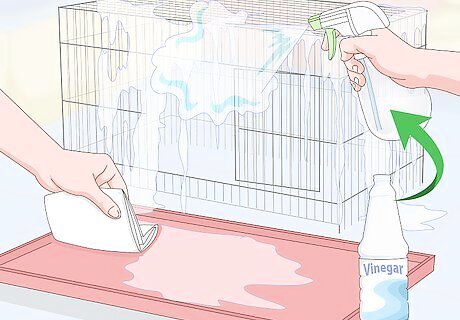
Clean your bird’s cage. To promote good health, keep your canary cages clean. Each day, remove food bowls and wash them with hot soapy water. Also each day, remove soiled cage liners and replace them. Under normal circumstances, entire cages should be sanitized once a month. If your bird is ill, you should do this every 1-2 weeks. In order to sanitize the entire cage, you can follow this procedure: Place the bird in a safe place. Remove all food/water bowls and toys, and discard cage liners. Wipe down the entire inside of the cage using paper towels and a disinfectant product that is safe for birds (such as diluted white vinegar). Rinse the cage by wiping down with a damp paper towel. Wash food/water bowls and toys in hot soapy water. Rinse toys and food bowls in warm water. Return all items to the cage, and return your bird to the cage.
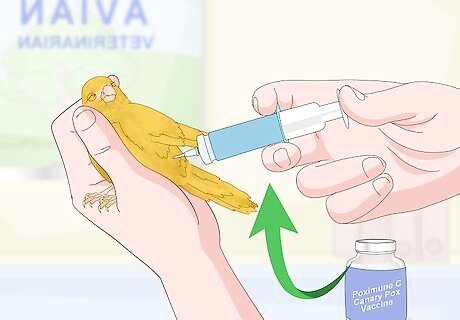
Vaccinate your bird. The Poximune C Canary Pox Vaccine has been proven effective at preventing the transmission of the canary pox virus. Typically, this vaccine is offered to birds living in flock environments, as opposed to individually kept pet canaries. Speak to your vet to find out of the vaccine is right for your bird.



















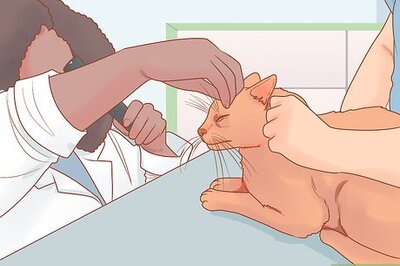
Comments
0 comment